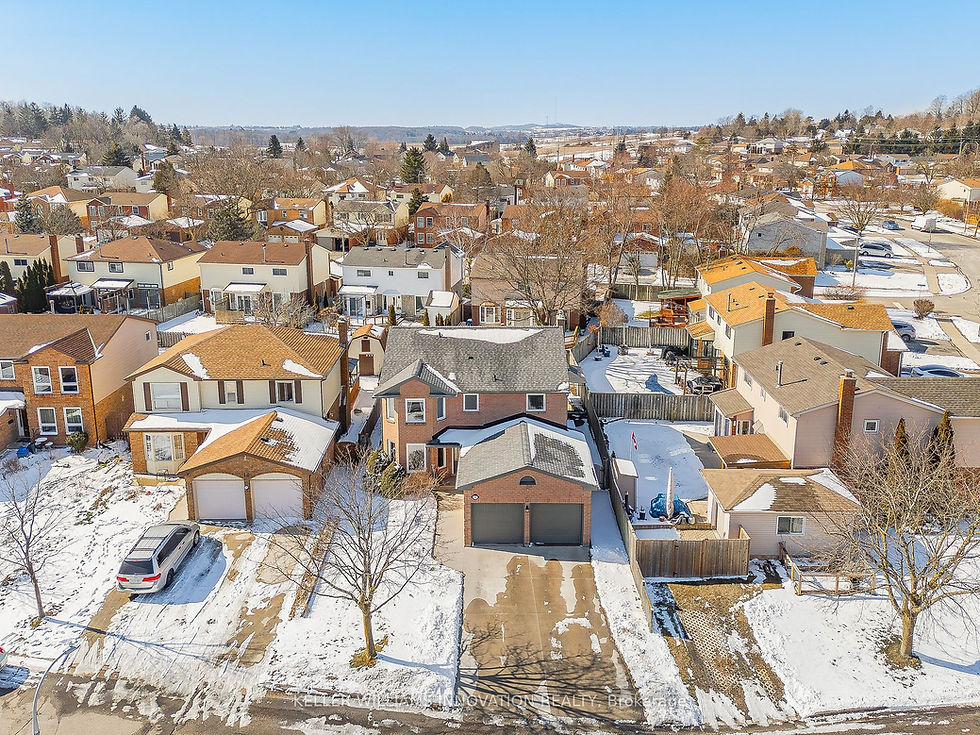Water Pressure and Homebuying: What You Need to Ask
- Aron Pinto
- Aug 19, 2020
- 4 min read
A common question that our clients ask during home viewings is: “Does this house have good water pressure?” When you’re searching for the perfect Waterloo Region home, while this may not be the first thing you think of it’s actually more important than you realize.
For example, is the flow from the showerhead strong enough for a quality shower and will someone flushing a toilet interrupt that shower (and leave you either freezing cold or burned?).
Inadequate water pressure can also affect other common home appliances like dishwashers and washing machines, as well as sprinklers and other exterior landscaping systems that use water.
Water pressure questions can’t be answered by examining water pressure on its own, as in turning on a faucet. Instead, you have to look at both water pressure and the resulting functional flow.
What is water pressure?
Water pressure is the amount of force from the water main into a home. It is measured in pounds per square inch (PSI), and normal water pressure is typically between 30 and 80 PSI.
What is functional flow?
Functional flow is the volume of water flowing through a home’s pipes and arriving at individual fixtures. Poor functional flow may be due to buildups in the pipes or poor plumbing.
How to Test a Home’s Water Pressure
To determine whether a home has enough functional flow, go to the bathroom and turn on the sink and the shower. Wait for satisfactory water temperature in the shower and then flush the toilet.
See if the flow diminishes. You can go to other fixtures and run the water too, but at some point, every system will experience diminished flow if you open too many fixtures at once. One sure way to kill the flow is to open up an exterior hose during ‘testing’. Keep it simple and test flow by opening up every fixture in a given bathroom.
How to Obtain Perfect Water Pressure
You don’t want your new home to have water pressure that is too low, but water pressure can also be too high. Piping systems are designed to have no more than 80 PSI. When you exceed this pressure it can cause problems.
High water pressure will rarely cause pipes to burst, but it stresses the weak links in your piping system such as rubber hoses and gaskets, making them vulnerable to leaks and failure.
You can correct high residential water pressure by installing a pressure reducing valve. This is a bell-shaped device that reduces water pressure. Aim for water pressure that is 60-70 PSI.
If the house has low pressure, you first want to determine if the house is on a public water supply system or a private well system. Most public systems are required to deliver a minimum of 30 PSI to your house, so inadequate pressure on public water systems is rare.
If the house is on public water supply and the utility cannot improve your pressure, the solution involves installing a pressure tank and a pump. This gives your supply piping system a pressurized boost. If the house is on a private well, poor pressure could indicate a problem with the captive storage tank and/or the pump and you should plan on have the well system serviced by a qualified well expert.
The Problem With Old Plumbing
Poor functional flow can be an issue in old houses with galvanized steel pipe. This type of pipe was commonly installed until the late 1960s and early 1970s. This pipe was manufactured with a coating of galvanization that was designed to prevent corrosion of the steel pipes. When this galvanization wears off, the pipes occlude with rust. The result is a restricted piping system that will not deliver adequate water to the fixtures even with all the pressure in the world. To fix the problem, you’ll need to replace the pipes.
Another common cause of poor functional flow is badly installed water piping systems. Good plumbers know how to size the pipes correctly so that adequate water is delivered to each fixture. An amateur mistake is running too many fixtures off of pipes that have too small a diameter. The result is inadequate water supply to fixtures or poor functional flow. This can be difficult to repair without replacing the pipe system.
However, just because a fixture has poor flow, don’t assume anything about the pipes yet. Other factors in the piping system can result in poor flow. Sometimes an angle stop (one of those shutoffs below the sink) may be partly closed. Fixture aerators (the little screens inside the faucets) can become restricted.
Want even more possibilities? The main water shutoff to the house could be party closed or restricted. Supply connector hoses could be kinked or restricted. The chances are you’ll need a plumber to help you answer these questions, but it may be worth investing in a plumbing inspection for a home you are really interested in.
Water Pressure and Your Home Purchase Decision
Is inadequate water pressure a deal breaker in terms of buying a home? No, as it is something that can usually be relatively easily addressed with the help of a good plumber. What you should keep in mind however is the cost of bringing the home’s plumbing system up to standard and factor that into your offer price and home purchase contract negotiations if needed.


